Database Management System Assignment: ERD, Design and Rules
VerifiedAdded on 2021/04/24
|6
|665
|49
Homework Assignment
AI Summary
This assignment solution focuses on the design of a database management system for CQ Insurance. It begins with an Entity Relationship Diagram (ERD) illustrating the entities, attributes, and relationships within the system, including Agents, Customers, Accidents, Property Descriptions, Policy Details, and Payment Details. Assumptions about the entities and their attributes are clearly defined. The document then outlines the business rules governing the relationships between these entities, such as the one-to-many relationships between Customers and various other entities like Policies and Accidents. Following this, the logical design of the database is presented, including the table structures with attributes, primary keys, and foreign keys, ensuring data integrity and efficient retrieval. Finally, a bibliography of relevant sources is provided to support the design choices and methodologies employed. This assignment provides a comprehensive overview of database design principles and their application in a real-world scenario.
1 out of 6
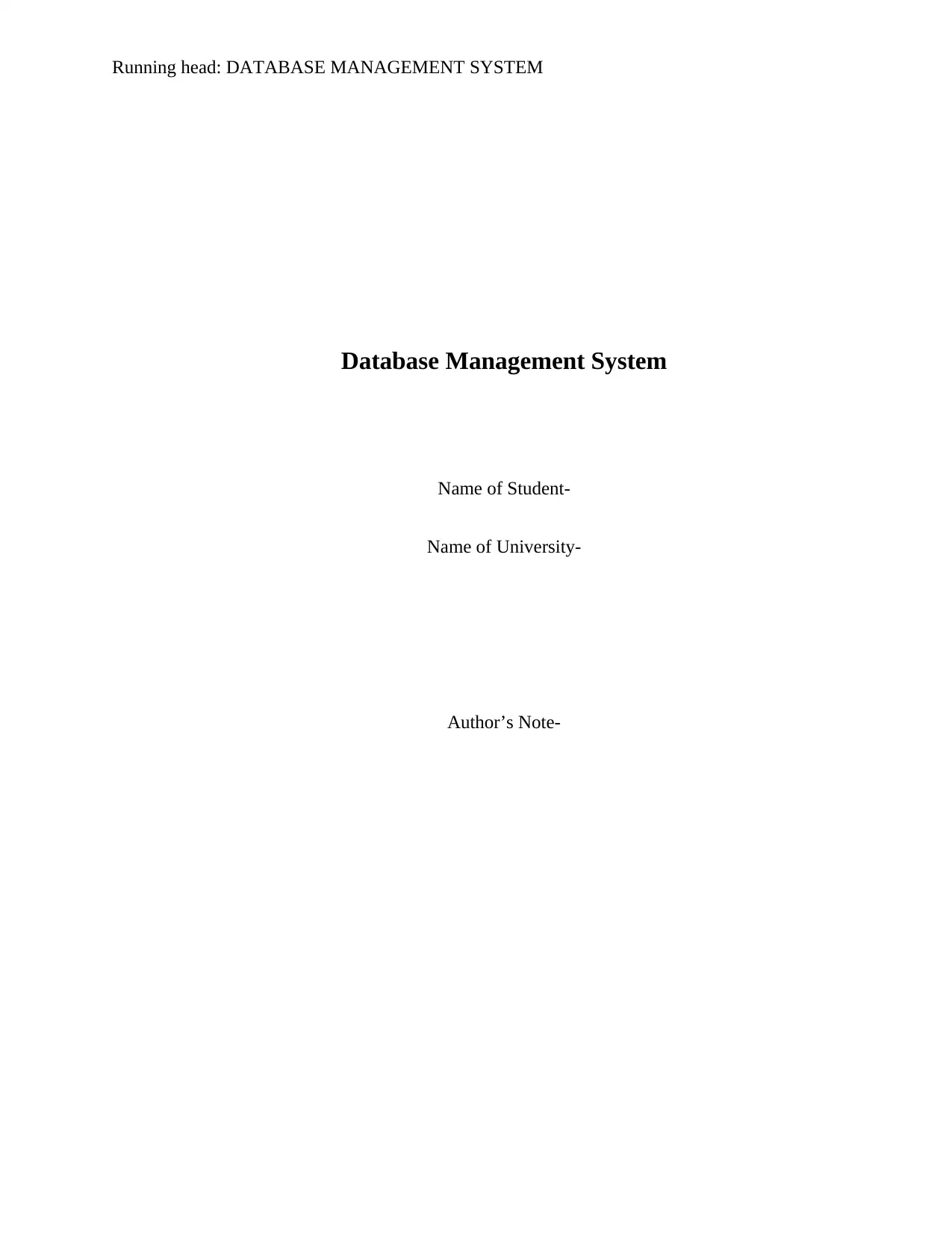
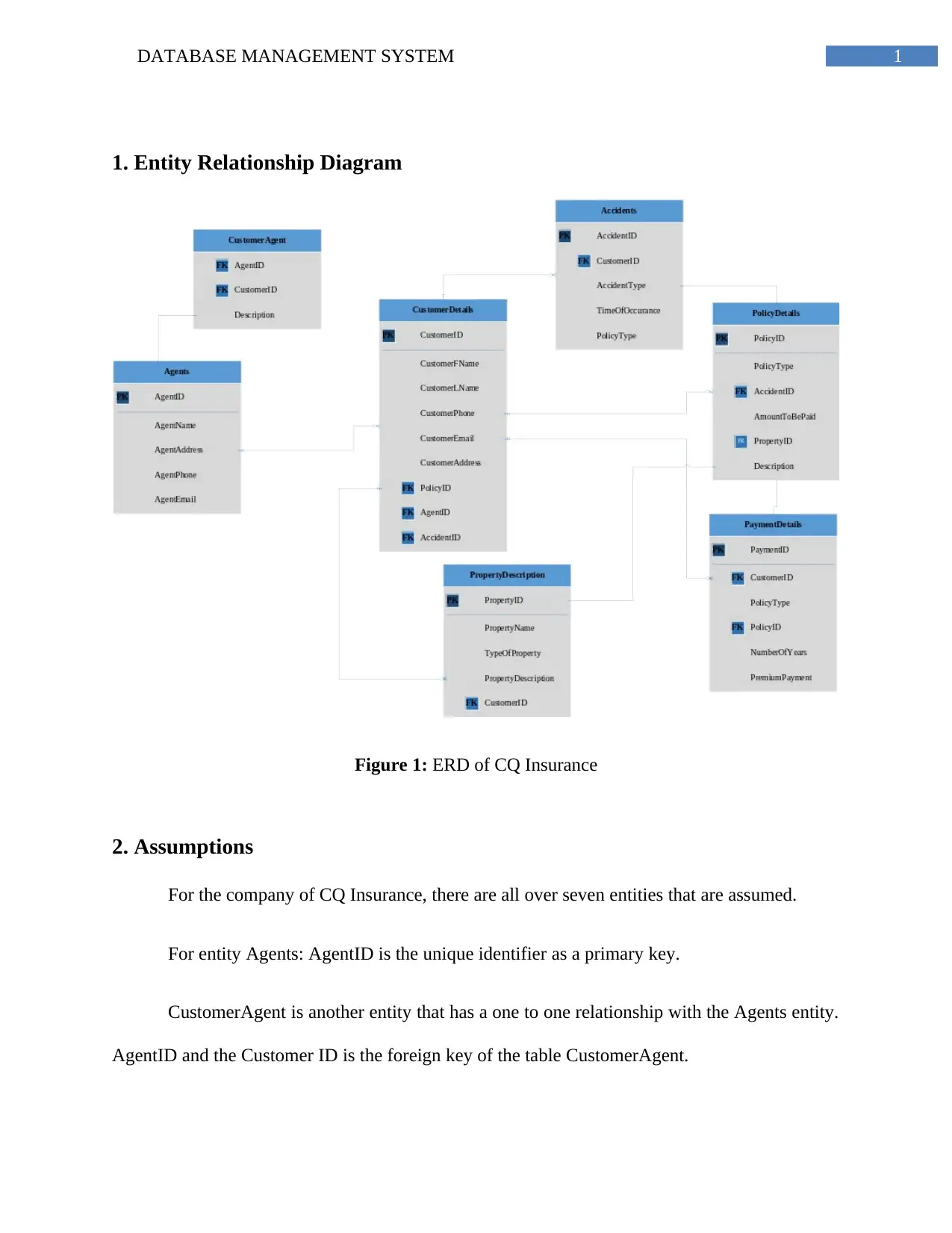
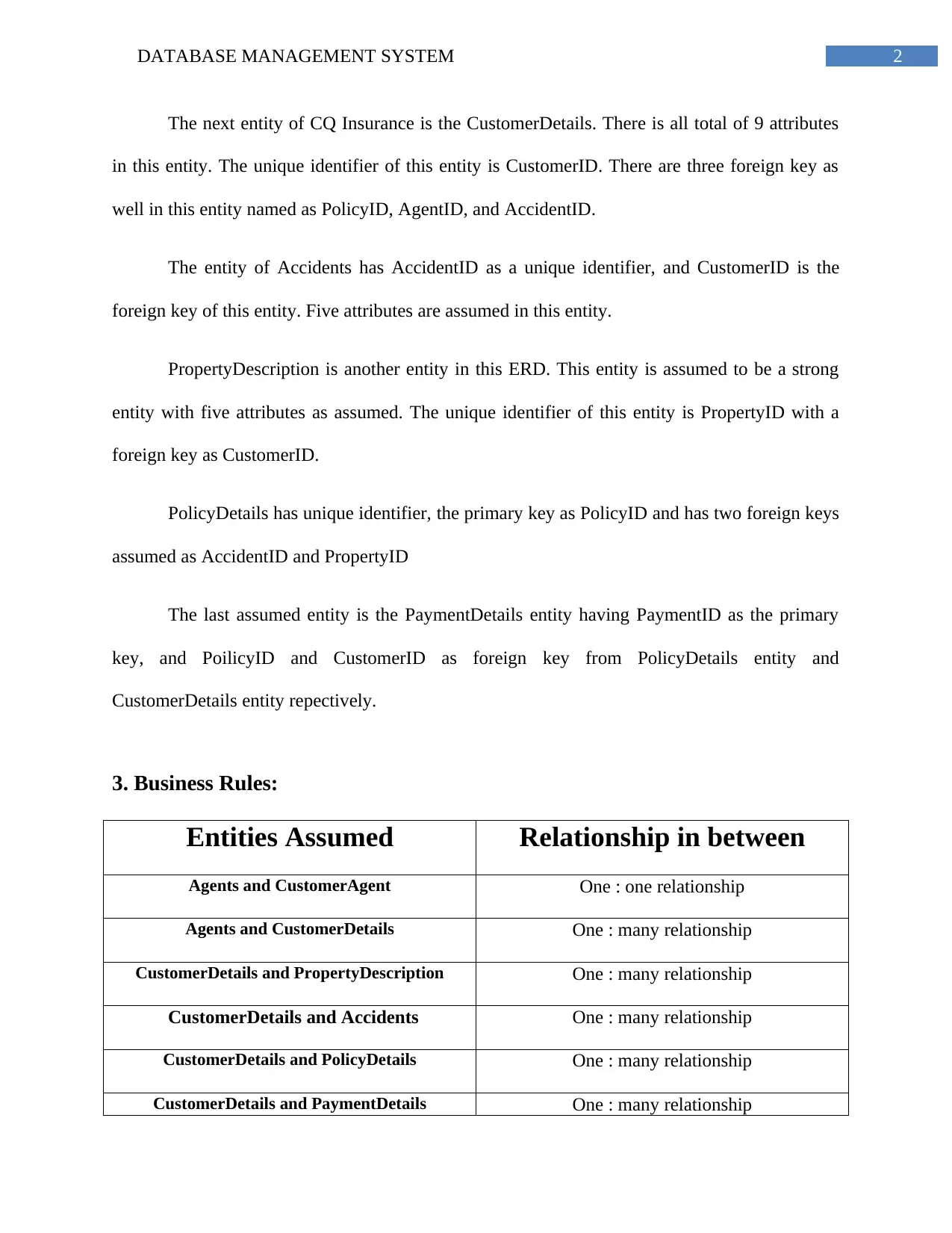

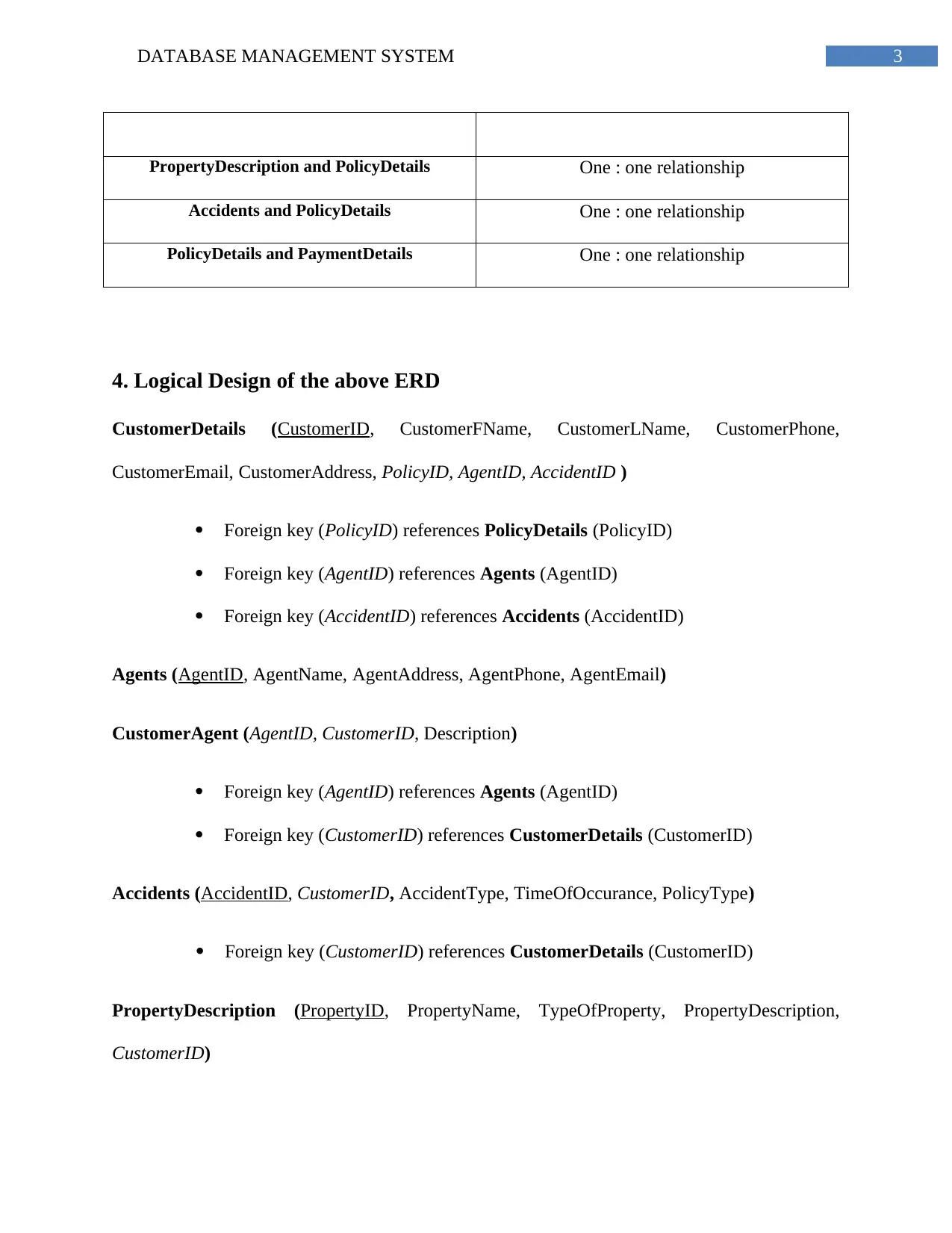
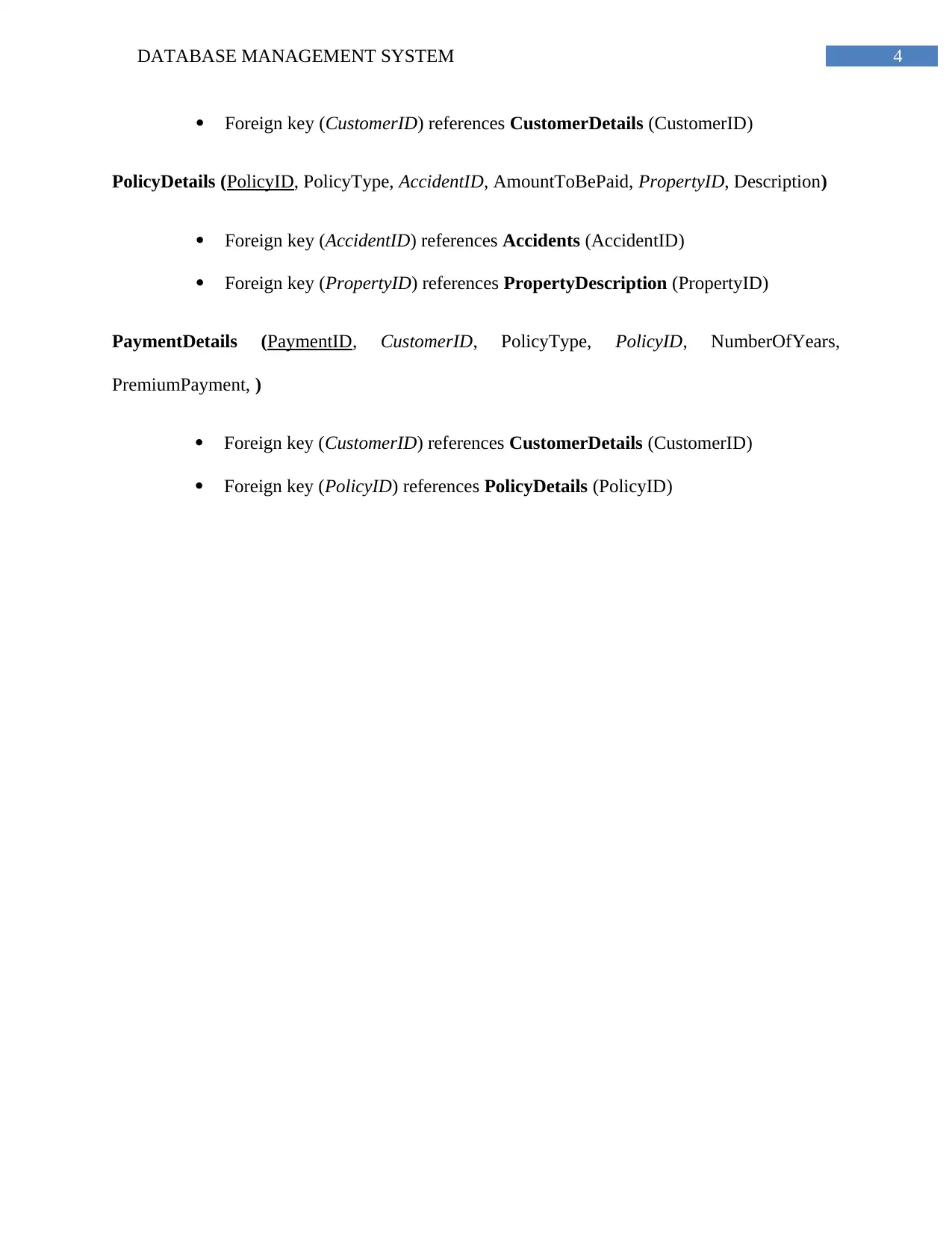
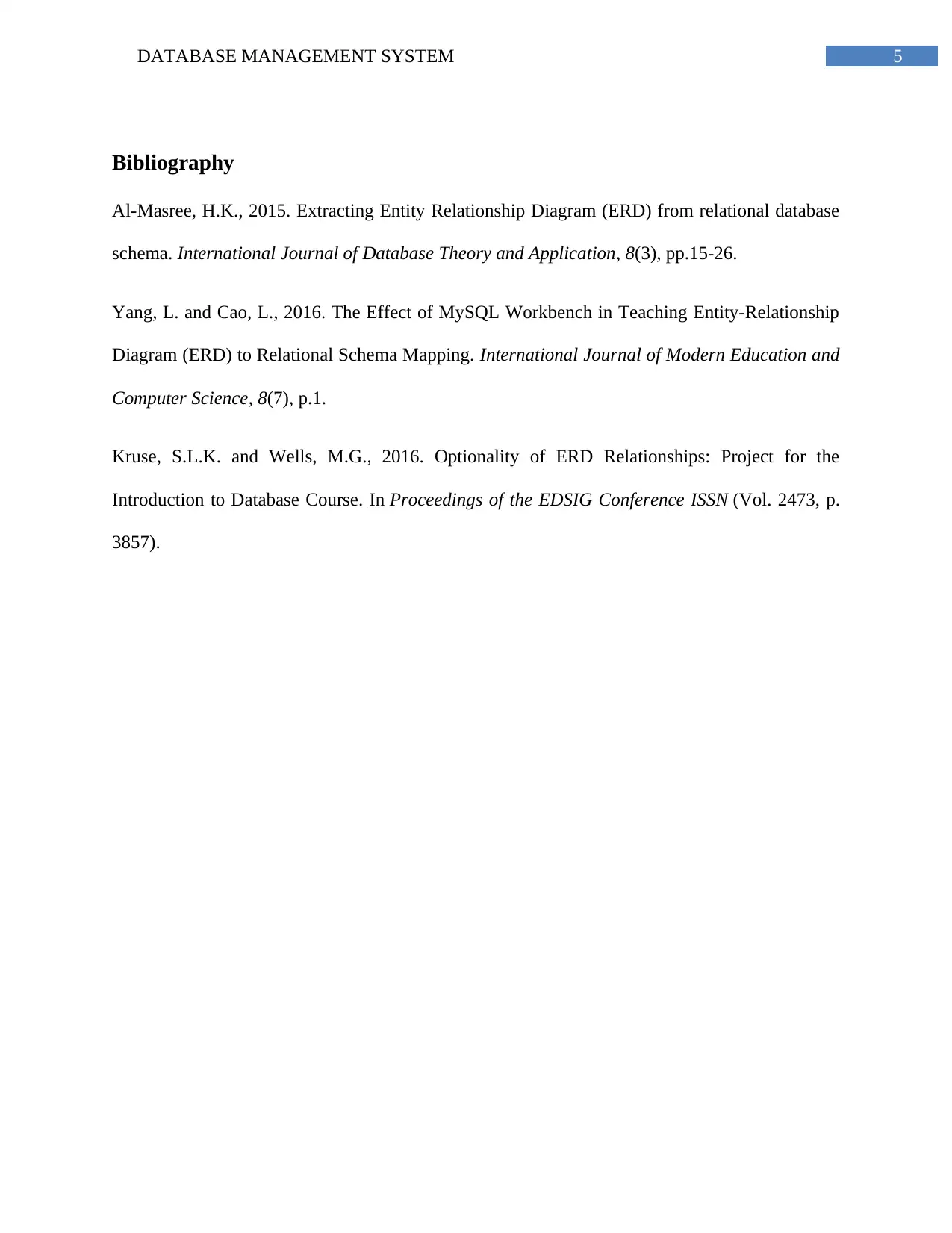






![[object Object]](/_next/static/media/star-bottom.7253800d.svg)